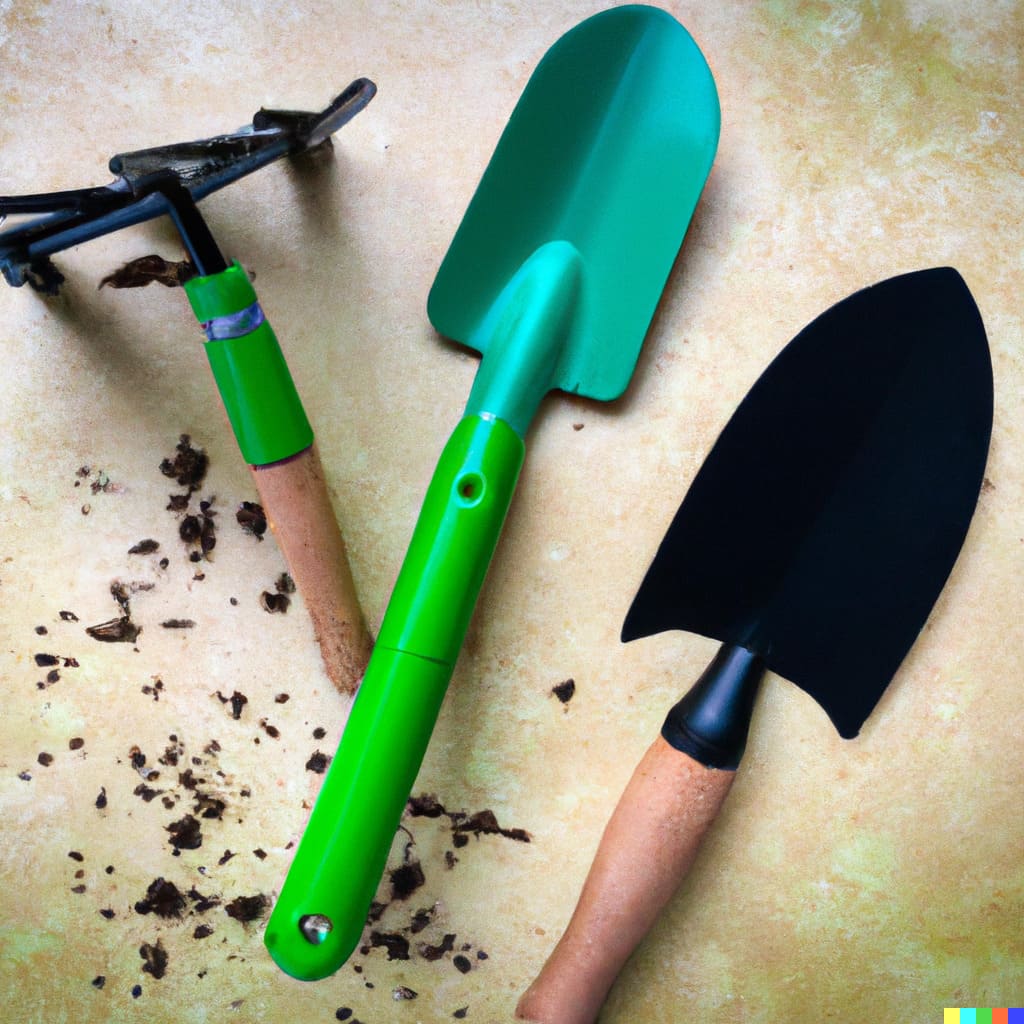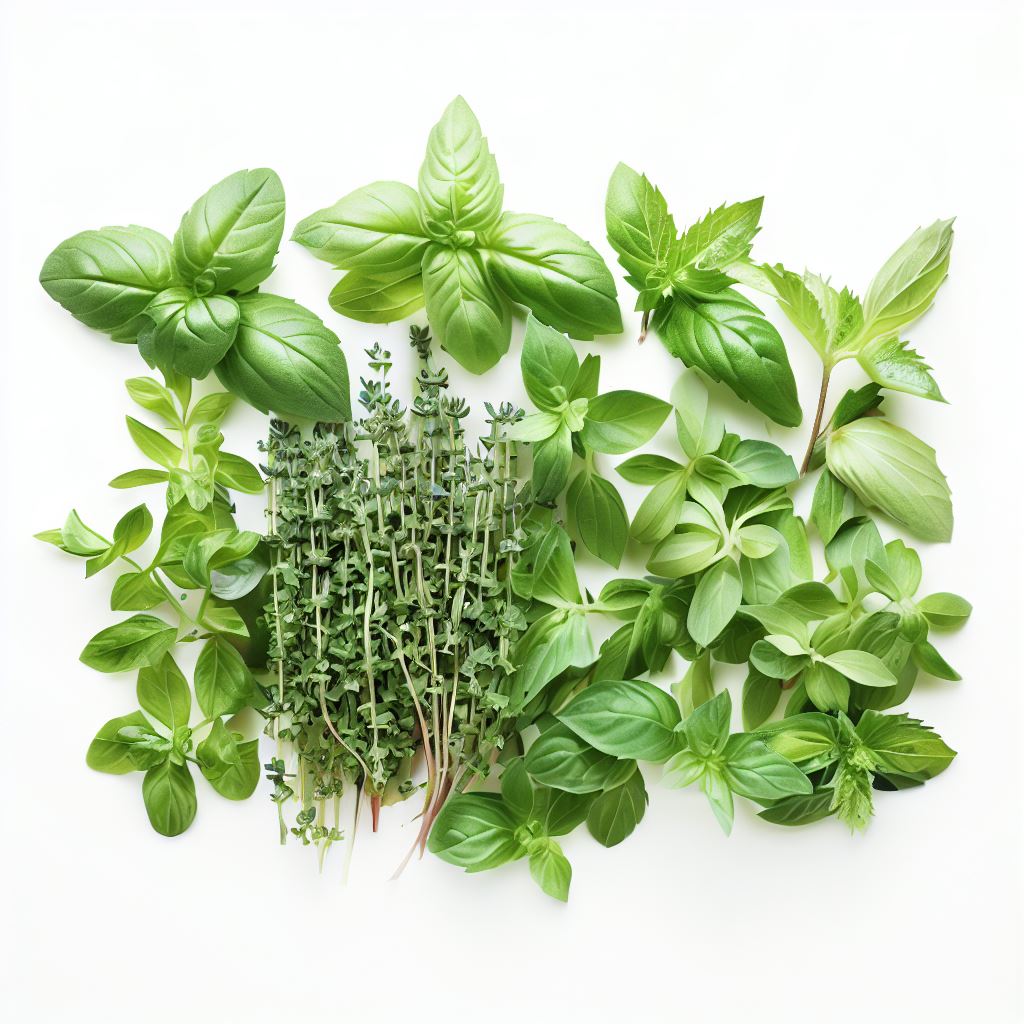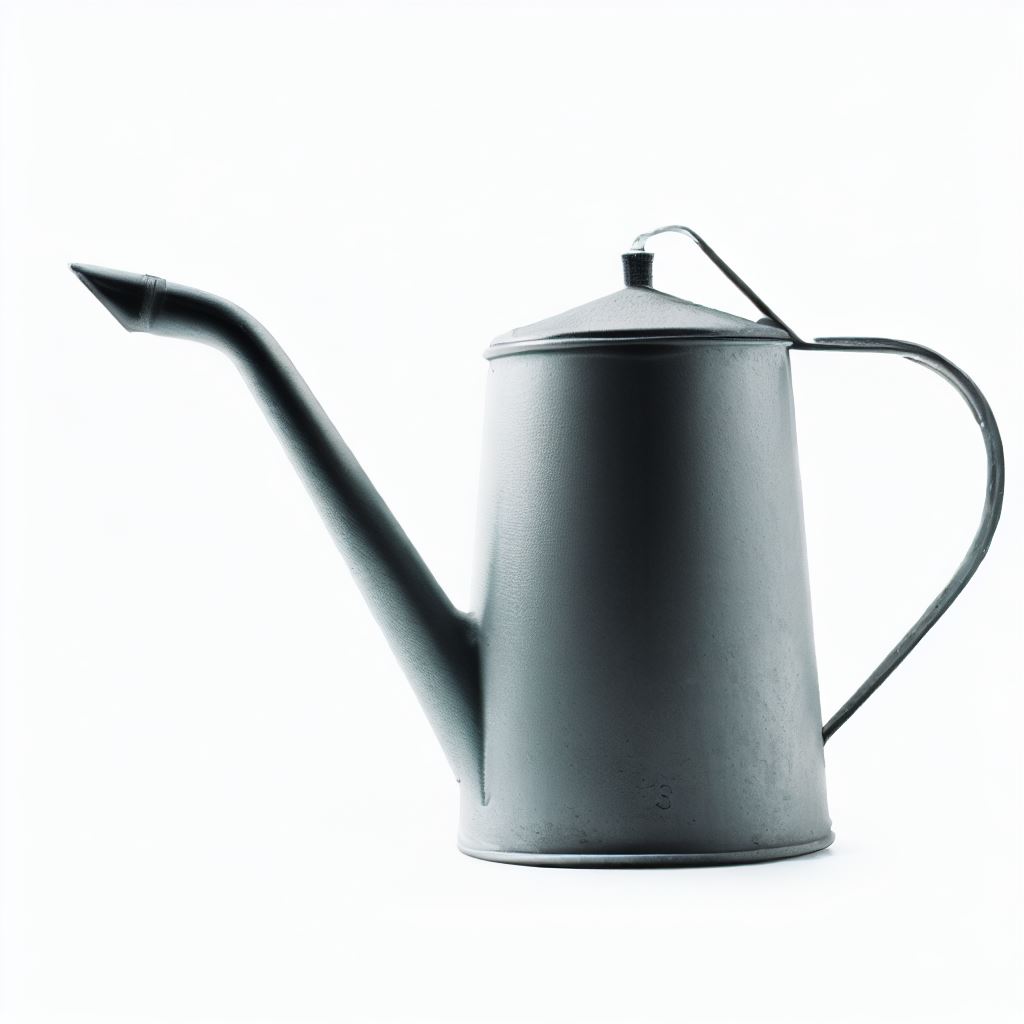
To get started, you’ll need to gather some essential tools that will help you set up and maintain your indoor herb garden.
Disclaimer: This site does not have any affiliate links. All recommendations are my own.
In this article
Container with Drainage Holes
Select a container with drainage holes to prevent waterlogging and ensure proper drainage.

HOMENOTE Plastic Planter indoor pot plants with drainage holes
- Suitable for planting most small and medium-sized home/office plants like orchid, snake plant, mint, cactus, aloe, to brighten up your living place
- Compared to common flimsy plastic pots for plants, HOMENOTE plastic flower pots are made by 3mm to 4mm super thick (from smallest to largest) sturdy polypropylene.
- Lightweight, no odor and will never be deformed or broken. Thick materials and clean appearance make them look like ceramics.
- Plants not included
Potting soil
Use a soil blend that drains well and includes compost for nutrients. This will provide a healthy growing environment for your herbs.

Harvest Hero Enhanced Perlite Mix
- It improves drainage, avoids clumping of soil while increasing airflow giving plant roots ideal growing conditions.
- Packed with the essential nutrients needed, indoor and outdoor plants
RELATED: 7 Best Indoor Gardening Kits
Watering Can with a Long Spout
A watering can with a long spout allows for easy and precise watering, preventing water from spilling onto the foliage.

Watering Can Indoor Plants with Removable Long Spout and Sprinkler Head
- The wall of the kettle is thicker, which is anti-drop and pressure-resistant, and has 2 O-rings to prevent water leakage (one inside and outside the adapter).
- 1 gallon watering can holds large water capacity, reducing the trouble of frequent irrigation, it can water multiple plants at once, which can help you save refill trips especially in hot weather
Pruner Shears
These tools are essential for trimming and maintaining the health of your herbs by removing dead or overgrown parts.

Super Sharp Premium Garden Shears
- The blades of pruning shears are made of stainless steel, sharp, rust and corrosion-resistant.
- A built-in safety lock that securely holds the blades closed when not in use, preventing any accidental openings that could lead to injuries.
- Non-slip and ergonomic handles that make garden clippers more comfortable in your hands
Garden Hand Tool Set
A hand trowel is useful for planting and transplanting herbs, while a hand fork helps loosen and lift the soil, making it easier to work with.

Garden Hand Tool Set with Wooden Handle
- Includes 3 Gardening Planting Tools: 1 Large Shovel, 1 Large Soil Plow Fork And 1 Rake
- Non-slip wooden handles, which are designed to fit different hand sizes
- Handle made of sturdy wood
Spray Bottle
Some plants may require extra humidity, which can be provided using a spray bottle. This is especially useful for herbs that prefer a more humid environment.

Grow Lights
If your indoor space lacks sufficient natural light, consider using LED grow lights to ensure your herbs receive the light they need for healthy growth.

GooingTop LED Grow Light
- 6000K White Light – equipped with 10 Red + 74 White LEDs, this growing Lamp is similar to the full-spectrum sunlight at noon
- Timer function with 3 options that is 4Hrs or 8Hrs or 12Hrs
- Easy to Install – with flexible Gooseneck & strong clamp,it allows you to place the growth light in any direction to provide the best lighting angle for your plants
- High Efficiency LED Lamp
RELATED: Choosing the Perfect LED Lights for Your Indoor Herb Garden Kits
Herb Seeds or Seedlings
If you’re starting from scratch, you’ll need herb seeds to plant and grow your desired herbs.

15 Culinary Herb Seed Packets
- This pack includes the following gardening favorites; arugula, basil, chives, cilantro, dill, garlic chives, lavender, lemon balm, mint, oregano, parsley, peppermint, rosemary, sage, and thyme
- Support small family owned businesses; buy with confidence for top-notch service.
- Crafted for both indoor & outdoor planting. Whether you’re in a city apartment with a hydroponic system or a country homestead farm, they’re perfect for everyone.
Herb Stripper and Spinner
These tools can be useful for efficiently stripping leaves from herb stems and drying freshly washed herbs.

Stainless Steel Herb Stripper
- Kale stripper not only could stripper leaf of the herb, but also could cut big leaves of the plant.
- Place the herb stems into the appropriate size holes and pull them out to remove the leaves.
Make sure you have all these tools before starting your indoor herb garden. They are essential for healthy herb growth and maintenance.
Choose the Right Location
Before you start your DIY indoor herb garden, it’s important to choose the right location.
| Factor | Considerations |
|---|---|
| Sunlight Exposure | Herbs need sunlight to grow, so choose a location with access to natural light. South-facing windows are ideal as they receive the most sunlight throughout the day. If natural light is limited, consider using grow lights to supplement. |
| Accessibility for Maintenance | Choose a location that is easy to access for regular maintenance tasks such as watering, pruning, and harvesting. This will ensure your herbs stay healthy and productive. |
| Temperature | Herbs prefer moderate temperatures between 60 and 75 degrees Fahrenheit. Avoid placing your herbs near drafty windows or heating/cooling vents that could disrupt their growth. |
By considering these factors, you can choose the ideal location for your indoor herb garden, setting it up for success.
Selecting the Right Herbs

Not all herbs are suitable for indoor growth, so it’s crucial to choose the right ones for your DIY indoor herb garden. Below is a list of herbs that thrive indoors:
| Herb | Light Requirements | Watering Needs |
|---|---|---|
| Basil | 6-8 hours of natural light per day or artificial light equivalent | Keep soil moist but not soggy |
| Cilantro | 4-6 hours of natural light per day or artificial light equivalent | Keep soil moist but not waterlogged |
| Mint | 4-6 hours of natural light per day or artificial light equivalent | Keep soil consistently moist |
| Oregano | 6-8 hours of natural light per day or artificial light equivalent | Allow soil to dry out slightly between watering |
| Parsley | 4-6 hours of natural light per day or artificial light equivalent | Keep soil moist but not waterlogged |
| Rosemary | 6-8 hours of natural light per day or artificial light equivalent | Allow soil to dry out slightly between watering |
| Thyme | 6-8 hours of natural light per day or artificial light equivalent | Allow soil to dry out slightly between watering |
Seed or Seedlings?
One of the first decisions you’ll need to make when starting your indoor herb garden is whether to use seeds or seedlings. Each option has its advantages and disadvantages.
- If you’re starting from seeds, you have a wider variety of herbs to choose from, and it can be an affordable option. However, it may take longer for your herbs to grow, and there’s a higher chance of failure if you’re inexperienced.
- If you opt for seedlings, you have a head start in terms of growth, and you can avoid the early stages of germination and seedling care. However, seedlings can be more expensive than seeds, and you may have fewer varieties to choose from.
Consider your level of experience, patience, and budget when deciding whether to start with seeds or seedlings. Whichever option you choose, make sure to follow the instructions carefully and provide your herbs with the right conditions for healthy growth.
Potting and Planting Tips
Now that you have selected the perfect herbs for your indoor garden, it’s time to get your hands dirty and start potting and planting. Here are some essential tips to ensure that your herbs thrive:
- Choose the right-sized pot: Select a pot that is slightly larger than the root ball of your herb. Avoid oversized pots as they can lead to overwatering and root rot.
- Prepare the soil: Use high-quality potting soil that is well-draining, loose, and rich in organic matter. Avoid using garden soil or soil from outside as they can contain harmful pathogens and pests.
- Plant at the right depth: Plant your herbs at the same level they were in their nursery pots. Avoid planting too deep as it can lead to root suffocation, and avoid planting too shallow as it can cause the soil to dry out quickly.
- Space them out: Ensure that there is enough space between each herb to allow for proper air circulation and growth. A good rule of thumb is to leave at least a few inches between each plant.
Remember to label your pots with the names of the herbs and the date of planting. This will help you keep track of their growth and harvest time.
Watering and Maintenance

Keeping your indoor herb garden well-hydrated is crucial for their growth and maintenance. Watering your herbs regularly, but not excessively, is essential for maintaining their health.
One way to ensure your herbs receive the right amount of water is to use a watering can with a narrow spout. This allows you to water the soil directly without over-saturating the herbs.
It’s important to remember that different herbs have different watering needs. For example, herbs like basil prefer moist soil, while herbs like rosemary and thyme prefer drier soil. Research the watering needs of each herb in your garden to ensure they receive the appropriate amount of water.
Regular pruning
In addition to watering, regularly pruning your herbs is vital for maintaining their growth and health. Use pruning shears to remove any yellow or dead leaves and to prevent your herbs from becoming too leggy. This encourages new growth and keeps your herbs looking their best.
Check for pests
Regularly check your herbs for any signs of pests or diseases. If you notice any issues, act promptly to prevent them from spreading. You can use organic pest control methods like neem oil or insecticidal soap to keep your herbs healthy and pest-free.
Lighting Requirements
Proper lighting is crucial for the success of your indoor herb garden. Most herbs require at least 6 hours of sunlight exposure per day. However, not all homes have adequate natural light, and that’s where artificial lighting comes in.
When selecting lighting fixtures for your indoor herb garden, choose LED grow lights specifically designed for plants. These lights emit the right spectrum of light that plants need for photosynthesis and growth. Ensure the lights are positioned 6 to 12 inches above your herbs.
It’s crucial to maintain a consistent lighting schedule to mimic natural sunlight. Aim to provide your herbs with 12 to 16 hours of light per day, and give them 8 hours of darkness for rest.
If you’re unsure if your herbs are receiving enough light, there are a few signs to look out for. If your herbs are stretching or leaning towards the light source, it’s a clear indication they need more light. Conversely, if they’re turning yellow or brown, it could be a sign of too much light exposure.
Remember, every herb has different lighting requirements, so be sure to do your research on the specific needs of your chosen herbs. With the right lighting, your indoor herb garden will thrive and provide you with fresh herbs all year round.
Harvesting and Using Your Herbs
Harvesting your herbs is easy and satisfying, especially when you get to incorporate them into your favorite culinary creations.
Here are some tips for harvesting and using your herbs:
- Harvest in the morning after the dew has dried but before the sun gets too strong.
- Use sharp pruning shears or scissors to prevent damaging the plant.
- Harvest regularly to encourage new growth and prevent the plant from becoming too woody.
Here are a few ideas for using your freshly harvested herbs:
- Add chopped herbs to salads, soups, and stews.
- Make herb-infused oils or vinegars.
- Create herb rubs or marinades for meat and fish.
- Brew herb teas or make herb-infused cocktails.
Remember, you don’t have to use all your herbs right away. You can also preserve them for later use:
- Dry herbs by hanging them upside down in a dry, cool place for a few weeks.
- Freeze herbs in ice cube trays with a little water or oil for easy preservation.
With all these options, you’ll never run out of ways to use your indoor herb garden. So get creative and enjoy the delicious flavors and scents of your homegrown herbs!
Troubleshooting Common Issues
Growing herbs indoors can be a rewarding experience, but it’s not without its challenges. Here are some common issues you may encounter and how to address them:
| Issue | Solution |
|---|---|
| Pests such as aphids, spider mites, or whiteflies | Try spraying your herbs with a mixture of water and mild dish soap. You can also introduce natural predators like ladybugs or lacewings to your garden to combat the pests. |
| Diseases such as fungal infections or root rot | Make sure to provide good air circulation and avoid overwatering. Remove any infected leaves or plants immediately to prevent the disease from spreading. |
| Nutrient deficiencies such as yellowing leaves or stunted growth | Try adding a balanced fertilizer or compost to your soil. Check the pH level of your soil to ensure it’s in the proper range for your herbs. |
Remember, prevention is key to avoiding these issues. Regularly inspect your herbs for any signs of problems and address them as soon as possible.
Congratulations on taking the first step towards creating your very own DIY indoor herb garden! By now, you have gained valuable insights into the minimum tools required, the benefits of growing herbs indoors, selecting the right location, choosing the right herbs, potting and planting tips, lighting requirements, maintenance, and troubleshooting common issues.
Armed with this knowledge, you are now ready to embark on an exciting journey of growing and enjoying fresh herbs right in your own home.







